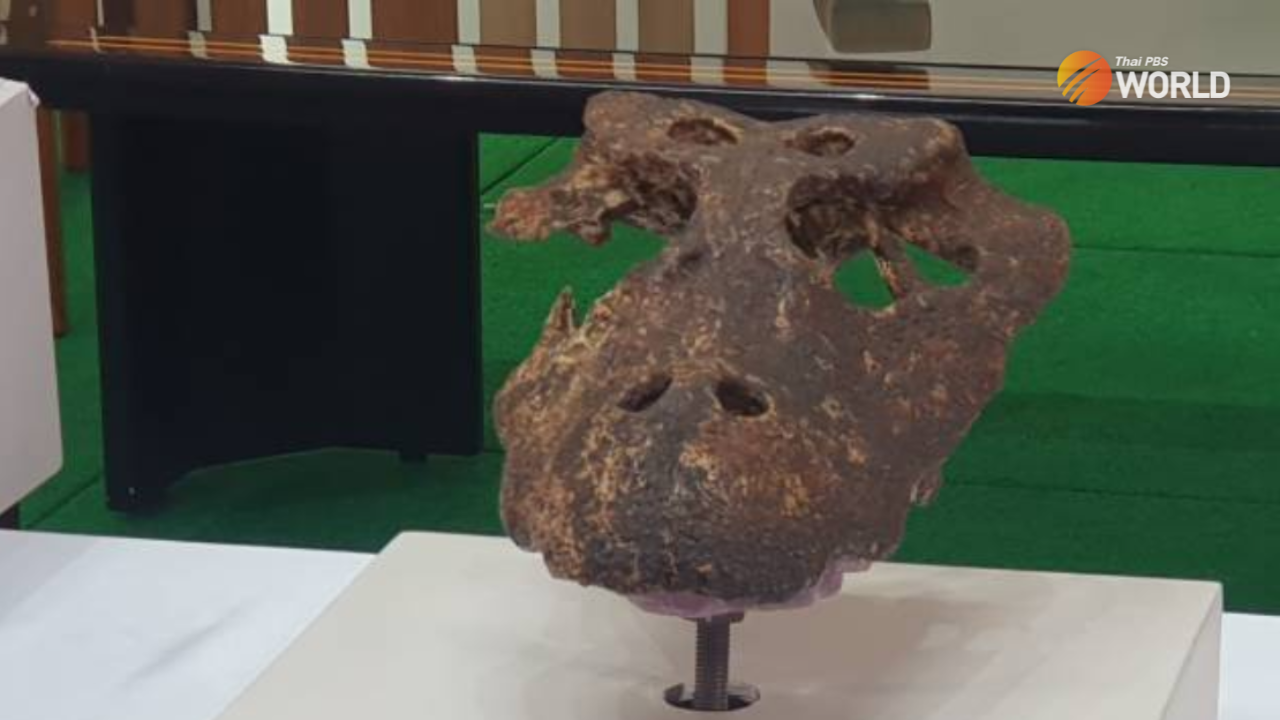Alligator remains found 18 years ago in Korat confirmed as now extinct species

The skull of an alligator, found at a depth of about two metres in a well in Non Sung district of the north-eastern province of Nakhon Ratchasima 18 years ago, has been confirmed to be from a now extinct species of the reptile, named Alligator munensis, said Thitiphan Chuchanchote, director general of the Mineral Resources Department.
He said that a team of experts from Chulalongkorn University and Tubingen University in Germany, led by Dr. Gustavo Darlim, have examined the ancient skull closely and have compared it to currently documented species, including Alligator mississippiensis and Alligator sinensis.
The experts concluded that the skull found in Thailand belonged to a different alligator species, which lived in the Mun River about 230,000 years ago, said Thitiphan, adding that the Alligator munensis may be a relative of Alligator sinensis, which used to thrive in the Yangzi and Mekong rivers, but dramatic changes in the Earth’s surface caused the elevation of the Tibetan plateau, separating the two alligator species.
He said that there are many crocodile species scattered throughout the country, but there are only two alligator species, namely Alligator mississippiensis, which is native to the south-eastern United States, and Alligator sinensis, still found in China’s Yangzi River.
Besides the remains of ancient alligator, remains of ancient wild buffalo and deer have also been found in May sub-district of Nakhon Ratchasima, said the director-general.






